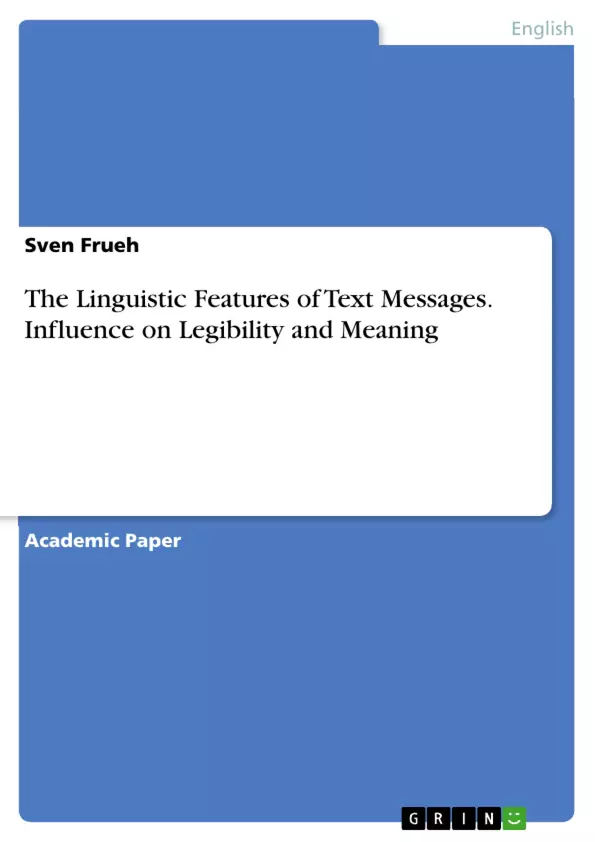This research paper explores texting as a language variety. It will summarize and explain the defining linguistic features, meaning-making elements of texting, and their frequency of use.
Therefore, the works of the leading expert on the language of texting, David Crystal, serves as the theoretical basis. To determine how and how often certain features are used, a corpus of text messages will be analyzed.
Furthermore, the paper will present the main causes and incentives responsible for the development of these features; it will start with general information on the corpus, followed by a description and analysis of the most commonly used linguistic features, their usage, and purpose.
Inhaltsverzeichnis (Table of Contents)
- Introduction
- General Information on the Corpus
- Abbreviations
- Logograms
- Initialisms
- Omitted Letters. Colloquial Contractions
- Pictograms
- Conclusion
- Primary Sources
- Secondary Sources
- Appendix
Zielsetzung und Themenschwerpunkte (Objectives and Key Themes)
This research paper examines texting as a distinct language variety, focusing on its linguistic features, meaning-making elements, and their frequency of use. It uses the work of David Crystal, a leading expert in the field, as a theoretical foundation. The paper analyzes a corpus of text messages to determine the usage of these features. It also explores the underlying causes and incentives for their development, ultimately seeking to answer the question of how these features influence the meaning and legibility of messages.
- The linguistic features of texting
- The meaning-making elements of texting
- The frequency of use of texting features
- The causes and incentives for the development of texting features
- The influence of texting features on message meaning and legibility
Zusammenfassung der Kapitel (Chapter Summaries)
- Introduction: This section provides a general overview of texting as a linguistic phenomenon, highlighting its rapid rise in popularity and its unique characteristics. It mentions the role of abbreviations, such as logograms, pictograms, and initialisms, in texting.
- General Information on the Corpus: This section describes the corpus of text messages used for the analysis. It emphasizes the corpus's size, origin, and method of analysis, providing a context for the subsequent findings.
- Abbreviations: This section explores the historical context of abbreviations, tracing their evolution from ancient times to the modern era of texting. It emphasizes the significance of abbreviations in saving time and space within the constraints of text messaging.
- Logograms: This section focuses on a specific type of abbreviation: logograms. It defines logograms, provides examples, and discusses their frequency of use within the analyzed corpus. It also analyzes the factors that contribute to their popularity in texting.
Schlüsselwörter (Keywords)
This research paper focuses on the linguistic features of text messages, analyzing abbreviations like logograms, initialisms, and pictograms. It explores the development of these features and their impact on the meaning and readability of messages. The research uses a corpus of text messages from American users to provide empirical evidence for the analysis.
- Arbeit zitieren
- Sven Frueh (Autor:in), 2019, The Linguistic Features of Text Messages. Influence on Legibility and Meaning, München, GRIN Verlag, https://www.grin.com/document/496777



